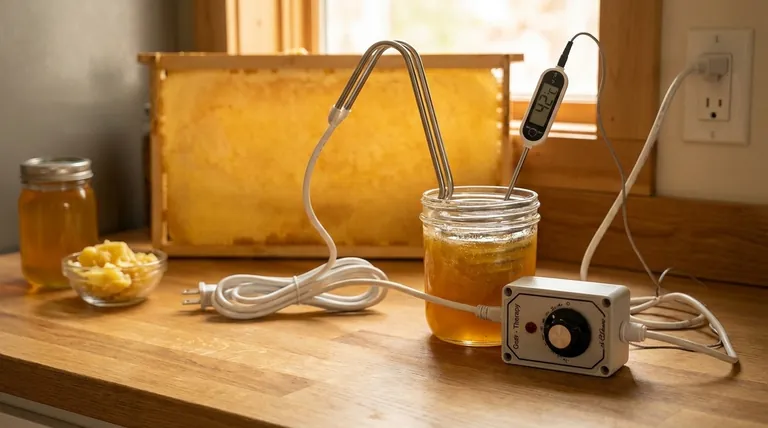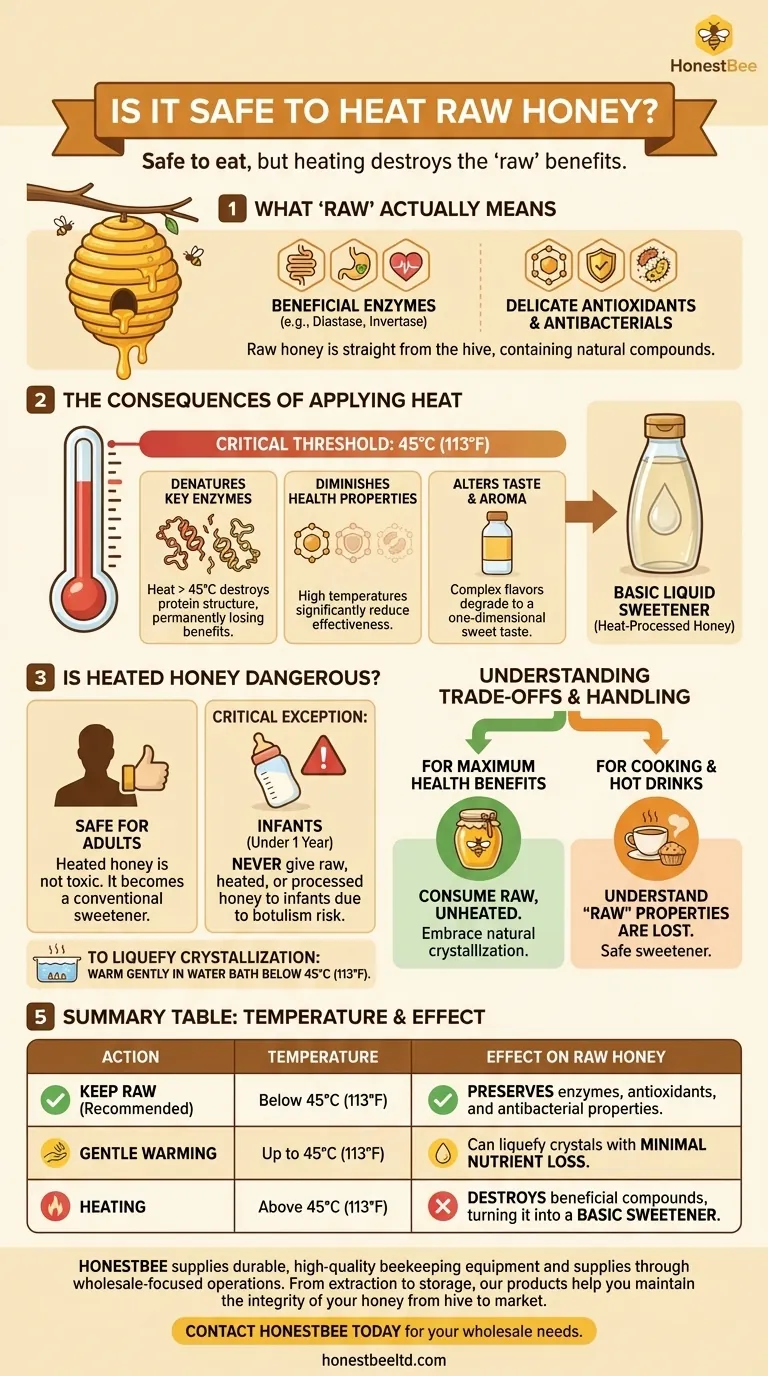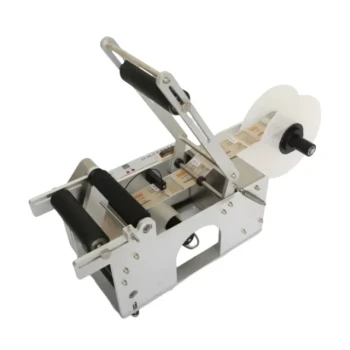To be direct, heating raw honey is safe from a toxicity standpoint for anyone over one year of age. However, the act of heating it above approximately 45°C (113°F) fundamentally changes its nature, destroying the beneficial enzymes, antioxidants, and antibacterial properties that define it as "raw."
The core issue isn't safety, but transformation. Heating raw honey does not make it toxic, but it does strip away its unique health benefits, effectively turning it into a conventional liquid sweetener.

What "Raw" Actually Means
To understand the impact of heat, you must first understand what makes honey "raw." Raw honey is honey as it exists in the beehive, often only strained to remove large debris like beeswax and dead bees.
The Power of Enzymes
Raw honey contains beneficial enzymes, such as diastase and invertase, introduced by the bees. These enzymes play a role in digestion and offer various health benefits.
Delicate Antioxidants
The natural antibacterial and antioxidant properties of raw honey are due to delicate compounds. These components are a primary reason people seek out raw honey over its processed counterparts.
The Consequences of Applying Heat
Heating raw honey initiates a process of degradation. While it may solve a problem like crystallization, it does so at a significant cost to the honey's nutritional profile.
It Denatures Key Enzymes
Heat breaks down the structure of proteins, a process called denaturation. Since the beneficial enzymes in honey are proteins, heating them above 45-50°C (113-122°F) permanently destroys them.
It Diminishes Health Properties
The valuable antioxidant and antibacterial compounds are also sensitive to heat. Applying high temperatures significantly reduces their presence and effectiveness.
It Alters Taste and Aroma
Part of the appeal of raw honey is its complex flavor and aroma, which are tied to its natural composition. Overheating can degrade these qualities, resulting in a more one-dimensional, purely sweet taste.
Is Heated Honey Dangerous?
From a food safety perspective, for the vast majority of the population, heated honey is perfectly safe.
No Toxicity for Adults
Heating honey does not create any toxic compounds. It simply becomes a sweetener, much like the clear, processed honey you find in most grocery stores.
The Critical Exception: Infants
It is crucial to never give honey—raw, heated, or processed—to an infant under one year of age. Honey can contain spores of the bacterium Clostridium botulinum, which can cause infant botulism, a serious illness. An infant's digestive system is not yet mature enough to handle these spores.
Understanding the Trade-offs
The decision to heat honey is a choice between preserving its natural benefits and achieving a specific culinary goal.
Health Benefits vs. Convenience
If your goal is to leverage the unique enzymatic and antibacterial properties of raw honey, you must not heat it. If you simply need a liquid sweetener for cooking, baking, or a hot beverage, using raw honey provides no extra benefit once heated.
Crystallization Isn't a Flaw
Many users heat honey to reverse crystallization. It's important to recognize that crystallization is a natural process and a sign of high-quality raw honey. It is not a sign of spoilage.
How to Handle Your Raw Honey
Your approach should be determined entirely by your goal for the honey.
- If your primary focus is maximum health benefits: Consume the honey in its raw, unheated state, and embrace any natural crystallization.
- If your primary focus is use in cooking or hot drinks: Understand that heating will destroy its "raw" properties, turning it into a safe and effective sweetener.
- If your primary focus is to liquefy crystallized honey: The best method is to warm it very gently in a water bath, keeping the temperature well below 45°C (113°F) to minimize damage.
Ultimately, you control whether your honey remains a raw, enzyme-rich food or becomes a simple, safe sweetener.
Summary Table:
| Action | Temperature | Effect on Raw Honey |
|---|---|---|
| Keep Raw (Recommended) | Below 45°C (113°F) | Preserves enzymes, antioxidants, and antibacterial properties. |
| Gentle Warming | Up to 45°C (113°F) | Can liquefy crystals with minimal nutrient loss. |
| Heating | Above 45°C (113°F) | Destroys beneficial compounds, turning it into a basic sweetener. |
For commercial apiaries and distributors, quality beekeeping supplies are key to producing premium raw honey.
HONESTBEE supplies durable, high-quality beekeeping equipment and supplies through wholesale-focused operations. From extraction to storage, our products help you maintain the integrity of your honey from hive to market.
Contact HONESTBEE today to discuss your wholesale needs and ensure your operation has the reliable equipment it deserves.
Visual Guide

Related Products
- Professional Thermostatic Conical Honey Melter
- Honey Concentrating Vacuum Heating Thickening Machine Dehumidifier for Honey
- HONESTBEE 72 Frame Industrial Electric Honey Extractor for Beekeeping
- Economy Small Scale Honey Dryer Dehumidifier Thickening Machine
- 0.5T Capacity Honey Dehumidifier Dryer with Vacuum Heating and Thickening Filtering Machine
People Also Ask
- How to permanently decrystallize honey? Embrace Its Natural State for Maximum Quality
- How does the Bee Blanket help maintain honey quality? Preserve Enzymes with Gentle Hive-Mimicking Heat
- What is melter honey used for? A Low-Cost Ingredient for Bakers and Brewers
- What is the effect of heating on honey? Preserve Quality with Controlled Warming
- Is it safe to heat crystallized honey? Restore Your Honey's Liquid State Safely



















